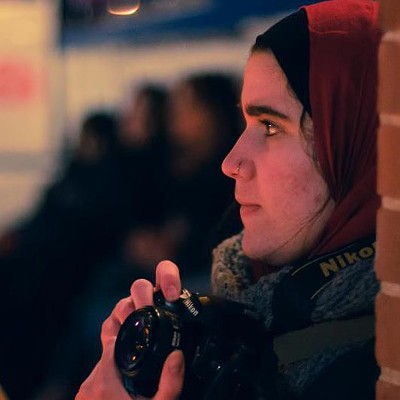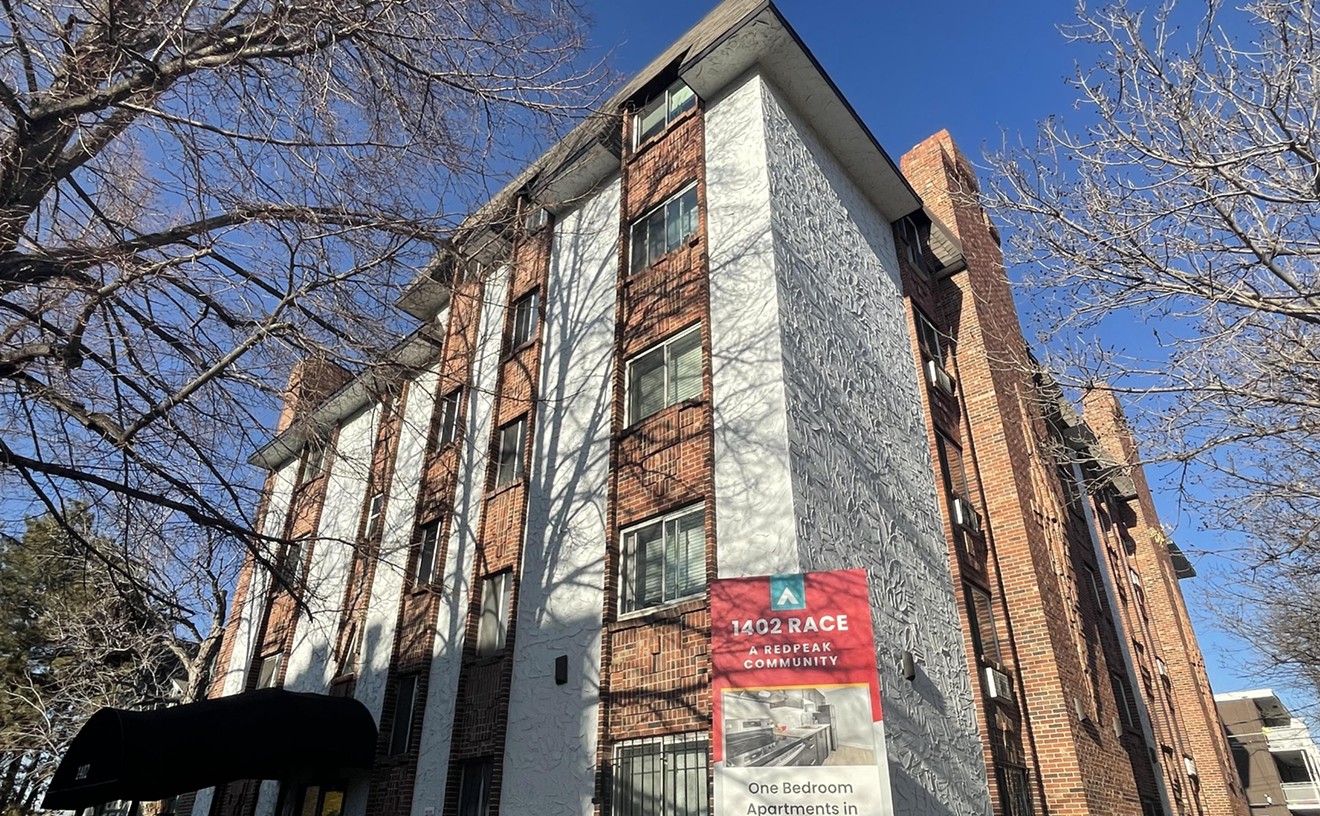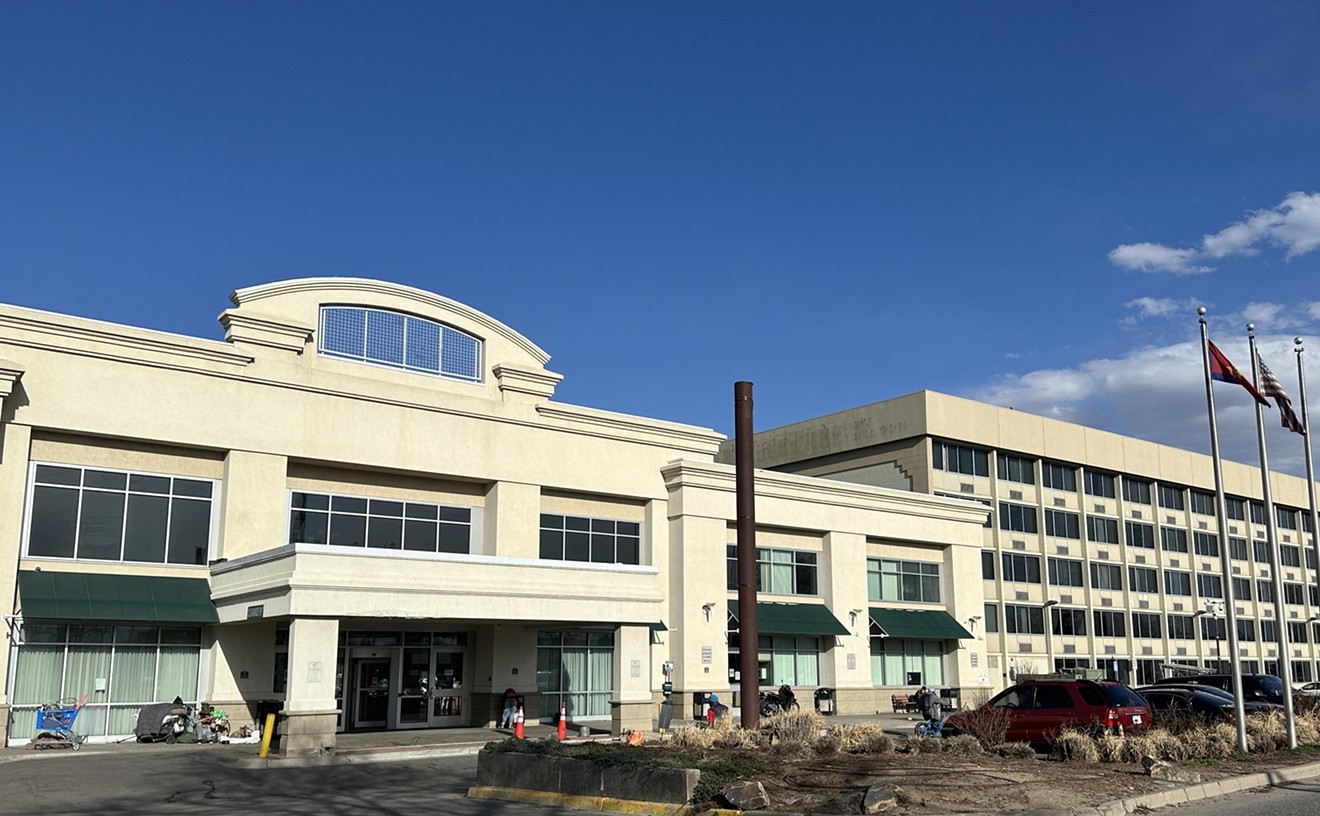First came Blucifer, the larger-than-life blue horse greeting passersby on their way to and from Denver International Airport, a sculpture that Denverites love and loathe equally. Maybe it's the demonic, glistening red eyes; the wild, wind-whipped mane; or that ghastly shade of blue fit for Hades himself that keeps "Mustang" in the public eye.
Now Denverites have another installation to gawk at: an undulating light display along Peña Boulevard that spans a quarter-mile and will serve as the airport's welcome sign. (No distracted driving, please!)
"It's an abstract take on a snow fence. It's also been described as a ribbon of light. More than anything, we wanted something that people will know you’ve made it to the airport," says Heath Montgomery, senior public information officer at DIA. "It’s a great way to showcase the entrance point to the airport, and it's a new opportunity for us to provide messages to the airport for all the people who use this facility."
DIA officials have been testing the display for months. After the finishing touches — gilded letters spelling out Denver International Airport — are completed next week, we can expect to live with the final results for decades to come. Here are seven things you should know about the welcome sign.
7. It's not really a sign.
Not technically, anyway. It's not a static sign greeting out-of-towners as they drive into Denver, like the state's "Welcome to Colorful Colorado." Instead, it's a long, winding series of 908 LED poles, each standing at sixteen feet, with three 768-square-foot LED screens squeezed in between. While the LED poles create a "ribbon of moving light" that will display a range of colorful patterns, the screens are the only part of this project that are, in fact, actual signs.
The screens will display airport messages, but most significantly, they will be used like digital billboards to generate ad dollars, which will go to paying off the massively expensive installation.
6. The part welcome sign/part art installation costs millions...and taxpayers aren't footing the bill.
When all is said and done, the colorful welcome sign will cost $11.5 million, with an additional $3 million contract for maintenance and operation over twelve years. DIA officials are quick to emphasize that no taxpayer dollars are being funneled to the project. The airport is footing the bill, with the expectation that ad revenue from the large LED displays will make up the cost in the long run. So where did the initial money come from? Though DIA is governed by the City and County of Denver and is managed by the Denver Department of Aviation, the airport operates like a business and is self-sufficient — meaning the airport has its own pot of money from which to pull.
5. DIA thanks you for buying its overpriced airport food.
There's no escaping airport concessions. Passengers pass restaurants on the way to security checkpoints, and even more restaurants, bars and retail kiosks await them on the way to their gates. So you indulged and sprang for a $10 chicken panini at Modern Market? That goes a long way toward supporting the airport. Concessions are the third-largest source of revenue outside of airline fees, according to Denver's budget book. The airport splits the revenue from a variety of lease agreements, including those with concessionaires and with the airlines. Last year, DIA generated $72 million from its agreements, which was deposited in the capital improvement fund that's partially funding the welcome sign installation.
4. It'll take ten years for advertising dollars to pay it off.
The airport is still finalizing its advertising rates for the LED welcome screens, but officials aren't worried about getting advertisers, instead touting DIA's number-one selling point: A record 61 million passengers came through the airport in 2017. And since the installation can be seen by car and by rail, it's expected to capture millions of eyeballs. The catch: Only businesses at the airport can advertise because of National Highway System restrictions. The entire $14.5 million project is expected to be paid off through advertising dollars in ten years, Montgomery says, after which DIA will rake in pure profits off the installation and diversify its revenue streams. Currently, the only non-airline revenue streams come from parking, car rentals, concessions, hotel, ground transportation, airport advertising and other sales.
"That's money we’re making that we’re not charging the airlines to keep fares competitive here," Montgomery says. "The primary goal of the sign is not to generate revenue, but to be the signature entry point for the airport.”
3. Denver got a big surprise after breaking ground on the project.
Denver City Council approved the project in December 2016, and in doing so created a public-private partnership to construct and fund the installation. DIA partnered with Panasonic Enterprise Solutions Co. — yes, that Panasonic, that makes everything from cameras to microwaves — and real estate developer LC Fulenwider to light up Peña Boulevard. Initially, Panasonic agreed to chip in $4.5 million for construction costs with the agreement that any advertising dollars would be split fifty-fifty with DIA. But that changed after some information came to light: Peña Boulevard was designated under the National Highway Act, a federal designation that limits commercial development along the roadway. In October, Denver City Council voted 8-1 to amend the agreement. DIA took on the total construction cost of $11.5 million, but will also capture 100 percent of the advertising dollars. Panasonic maintains a twelve-year, $3 million operation-and-maintenance contract for the project.
2. The ribbon of moving light was inspired by a light display at Los Angeles International Airport.
Denver didn't quite plagiarize LAX's iconic LED light display (West Coast transplants might argue otherwise), but Montgomery admits that the City of Angels was a source of inspiration. LAX has fifteen thick, towering columns of light arranged in a ring through which commuters drive. DIA's installation spans 1,000 feet in the center of Peña Boulevard and comprises nearly 1,000 thin, LED poles that can create kinetic light displays. Not quite the same, but the similarities are there. All art is theft?
1. The ribbon of moving light is a sight to behold, as are DIA's numerous other art installations.
Since 1988, 1 percent of any capital improvement undertaken by the City of Denver has been set aside to fund public art. DIA has 33 art installations in its permanent collection, which are sprinkled across the sprawling complex. Though the light installation was not funded by the airport's public art budget and isn't considered an art piece, the installation has brightened up the long and often dreadful ride to the airport. Yes, billboards in all forms be damned, but there's something magnetic about those shining lights. Just like Blucifer, though, the installation may not be for everyone.
[
{
"name": "Air - MediumRectangle - Inline Content - Mobile Display Size",
"component": "12017618",
"insertPoint": "2",
"requiredCountToDisplay": "2"
},{
"name": "Editor Picks",
"component": "17242653",
"insertPoint": "4",
"requiredCountToDisplay": "1"
},{
"name": "Inline Links",
"component": "18838239",
"insertPoint": "8th",
"startingPoint": 8,
"requiredCountToDisplay": "7",
"maxInsertions": 25
},{
"name": "Air - MediumRectangle - Combo - Inline Content",
"component": "17261320",
"insertPoint": "8th",
"startingPoint": 8,
"requiredCountToDisplay": "7",
"maxInsertions": 25
},{
"name": "Inline Links",
"component": "18838239",
"insertPoint": "8th",
"startingPoint": 12,
"requiredCountToDisplay": "11",
"maxInsertions": 25
},{
"name": "Air - Leaderboard Tower - Combo - Inline Content",
"component": "17261321",
"insertPoint": "8th",
"startingPoint": 12,
"requiredCountToDisplay": "11",
"maxInsertions": 25
}
]












